

Turnip has a long history of growing, and without doubt is among the most tasty vegetables.
Top turnip facts
Name – Brassica rapa or napus
Family – Brassicaceae
Type – vegetable
Height – 8 to 16 inches (20 to 40 cm)
Exposure – full sun
Soil – humus-rich, well-drained
Harvest – April to December
From sowing to harvesting, caring and preserving, every step is important and helps produce quality turnips.
Cultivate turnips from spring to fall to provide for food almost all year round.
Sowing turnips is best indoors from February onwards or directly in the ground from April to September.
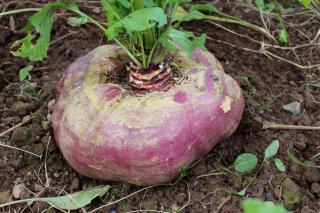 Turnips love rather rich soil, so adding manure in fall of the preceding year is good.
Turnips love rather rich soil, so adding manure in fall of the preceding year is good.The most common parasite attacking turnips is the turnip flea beetle. This is a small black flea that drills small holes in turnip leaves and can have a devastating impact on your harvest if you don’t catch the infestation early enough.
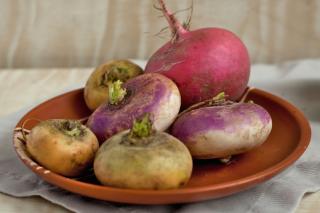 Parent flies lay eggs near the root crown of turnips, which hatch into larvae that burrow underground and feed on the roots.
Parent flies lay eggs near the root crown of turnips, which hatch into larvae that burrow underground and feed on the roots.
This white butterfly also lays eggs on turnip leaves, but caterpillars will only attack air-born parts. If you catch these caterpillars, the main root harvest will be safe!
Slugs definitely love turnip leaves, and they can destroy an entire production in just a few days.
Blight is one of the most devastating diseases for turnips. In the summer, heat and high moisture spur the growth of this fungus.
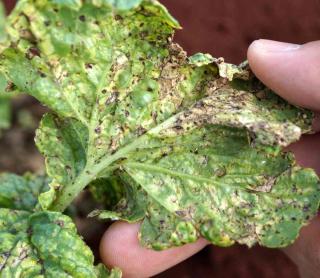 This is a disease that causes yellowing on leaves. Aphids spread the virus, and leaves develop chlorotic yellow spots. It can infect all cabbages and lettuce.
This is a disease that causes yellowing on leaves. Aphids spread the virus, and leaves develop chlorotic yellow spots. It can infect all cabbages and lettuce.
There isn’t any treatment, so do your best to control aphids.
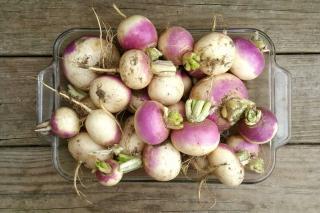 Harvest turnip around 2 months after sowing for spring and summer varieties, and 3 months after for winter turnips.
Harvest turnip around 2 months after sowing for spring and summer varieties, and 3 months after for winter turnips.
During the harvest, turnips must feel firm and heavy, and they must be harvested ripe for them to really stand out once cooked.
Spring and summer turnip are best harvested just when you plan to eat them; they will also keep well in a cool and ventilated place.
Fall and winter turnip are also best harvested ripe, but to extend their keeping you can put them away in dark, cool and ventilated place.
The best way to avoid diseases is to enhance your turnips’ defense mechanisms through companion planting and crop rotation.
Turnips DREAD growing near garlic.
Turnips LOVE growing near thyme, rosemary, lettuce and pea.
For crop rotation, the best thing to do, especially to fight flea beetle, is to plant turnips and rutabaga in alternate years.
But turnips are vegetables that heavily drain soil nutrient reserves and it’s best to wait 3 years before planting turnips in the same spot.
Turnips keep easily over several weeks, preferably in a cellar or in a cool room.
To keep winter turnips best, leave them in the ground until January, at least those that have been sown as late as possible.
If you only need to keep them a few days, the vegetable rack in your refrigerator is fine.
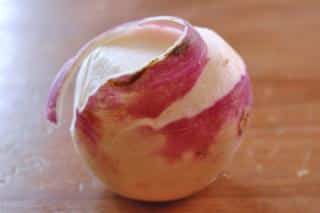 Native to Asia, it is said that turnips are excellent in treating winter infections and also have a positive effect on skin.
Native to Asia, it is said that turnips are excellent in treating winter infections and also have a positive effect on skin.
Turnips are full of water, fiber-rich and harbor very few calories, which make them ideal vegetables for bowel functions.
Boasting high potassium content, turnips help prevent common ailments such as the flu or bronchitis.
When cooked, their many flavors flourish around the palate and if freshly picked they don’t even need any peeling. They then melt in the mouth.
Turnips are also delicious in soups, roots of course, but also leaves which you can blend into delicious turnip leaf soup.
Beware of letting the ground dry up, water generously during the hotter months. Small turnips do not like heat waves. Plant them near tomatoes or pole beans for shade.
Don’t throw the leaves away but eat them in delicious soups.
Your comment is awaiting moderation.